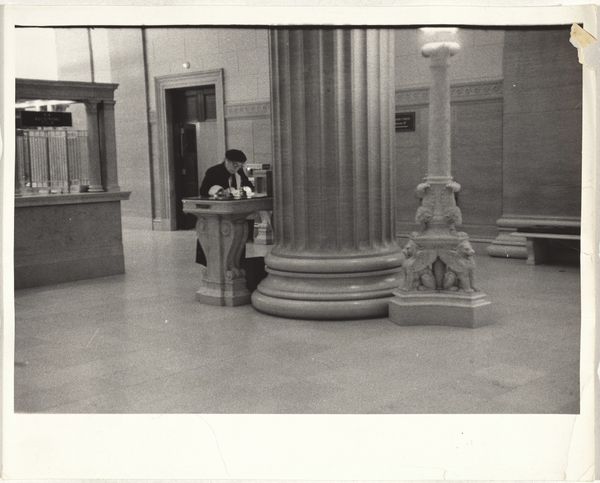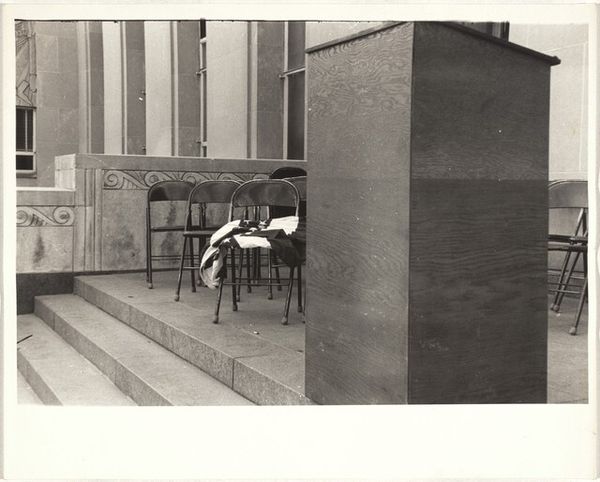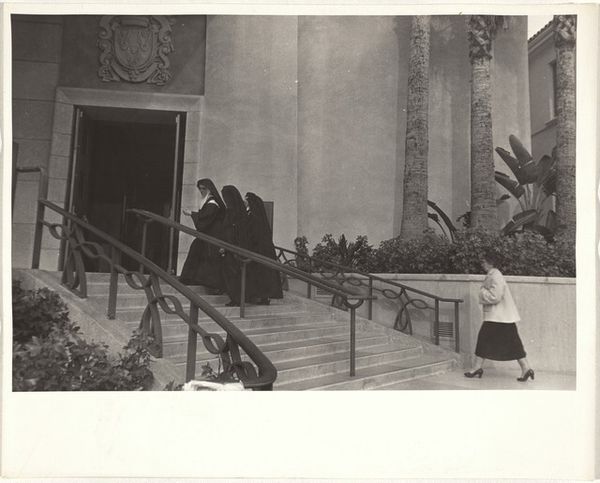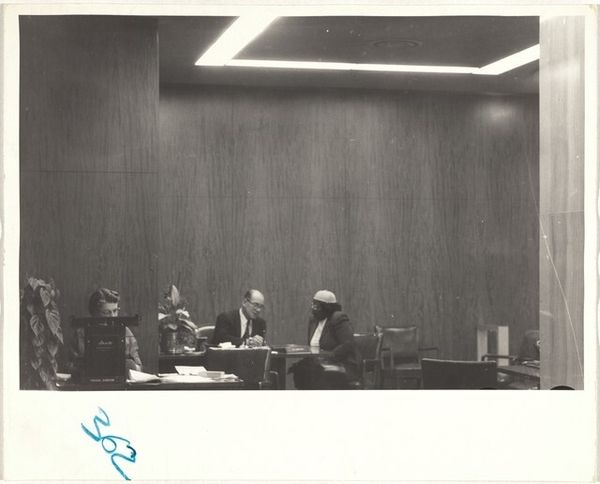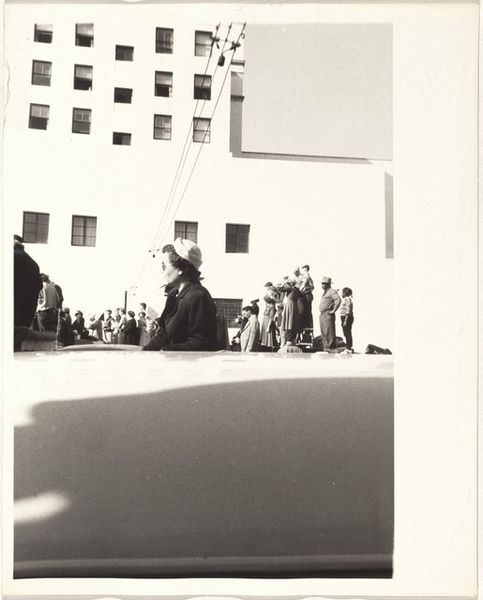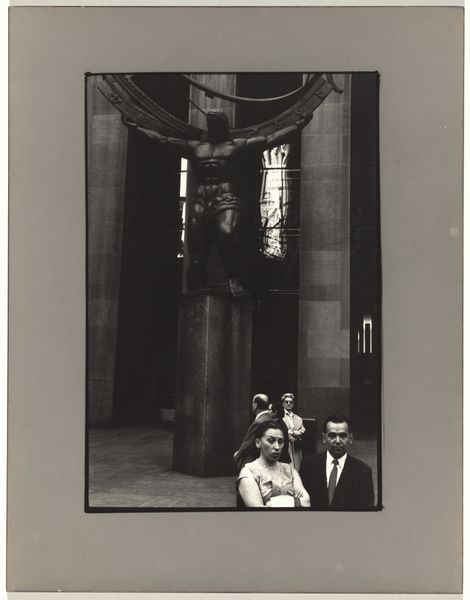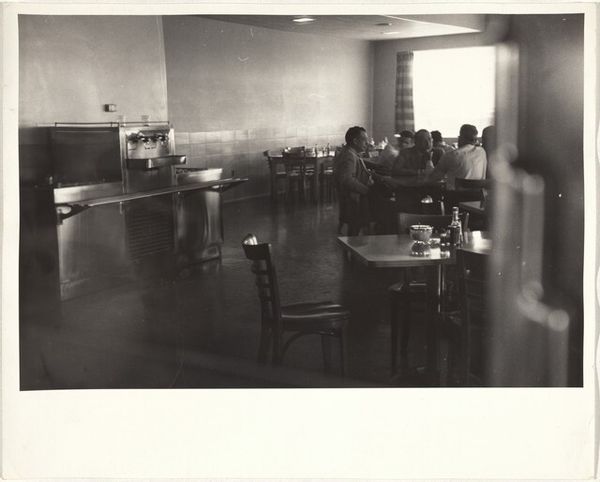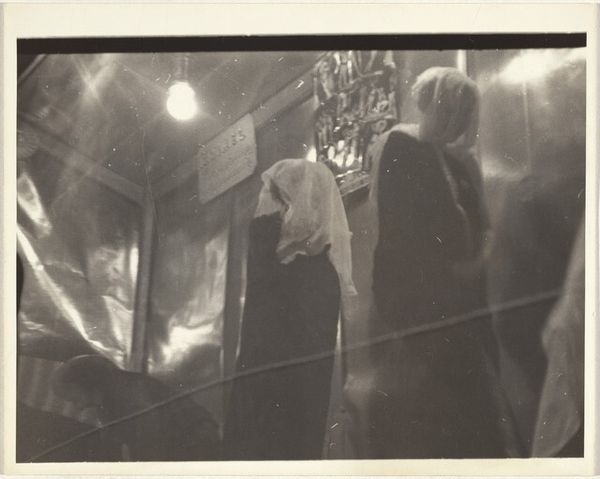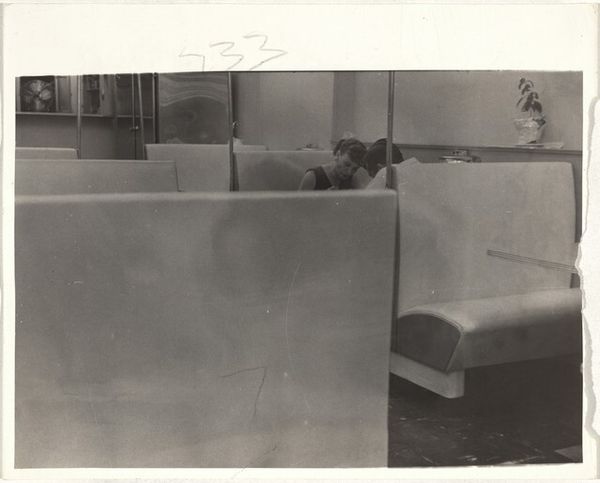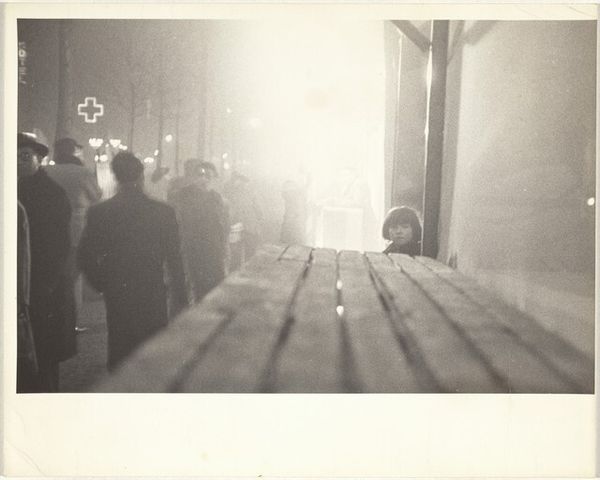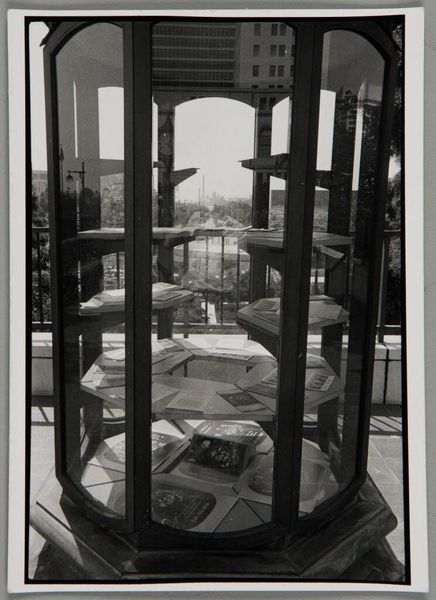
print, photography, gelatin-silver-print
#
portrait
#
print photography
# print
#
archive photography
#
street-photography
#
photography
#
historical photography
#
gelatin-silver-print
#
modernism
#
realism
Dimensions: sheet: 20.3 x 25.3 cm (8 x 9 15/16 in.)
Copyright: National Gallery of Art: CC0 1.0
Editor: Here we have Robert Frank's "Building Interior--Salt Lake City, Utah" from 1956, a gelatin silver print. It's quite a stark image, isn’t it? The contrast is so sharp, and those figures huddled by the wall almost seem trapped by the architecture. What strikes you about this piece? Curator: What intrigues me is how Frank positions these individuals within a seemingly public space. They almost melt into the wall. Considering Frank's broader project, *The Americans*, what commentary do you think he might be making about community, belonging, and alienation in post-war America through this image? Editor: That’s interesting… Maybe they're marginalized or excluded somehow, finding solace only within the architecture itself. But why the choice to almost obscure their faces? Curator: Precisely! The obscurity, I would suggest, isn't accidental. Think about the context: mid-1950s America. Who is given visibility, whose stories are told? Frank was often drawn to those on the fringes, challenging the dominant narratives of the time. What do the architectural elements tell us? Does the grandiose interior play a role? Editor: The architecture seems cold and imposing. Perhaps Frank's highlighting a sense of the individual being dwarfed, even oppressed, by institutions and societal structures? It almost feels voyeuristic, like we are catching a glimpse of something private in a very public space. Curator: That sense of intrusion is vital. Frank challenges the idealized image of American life often presented in the media, unveiling its complexities and disparities. What this image truly captured in 1956 might be even more nuanced in the twenty-first century, a critique of American social structures still relevant to us today. Editor: I hadn’t considered that Frank’s own position as an outsider, an immigrant, might have informed his lens. It’s given me a whole new perspective. Thanks. Curator: And for me, this underscores how relevant historical analysis can be for today’s cultural interpretation of visual art. Thank you for sharing.
Comments
No comments
Be the first to comment and join the conversation on the ultimate creative platform.
